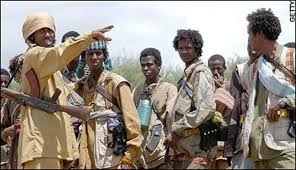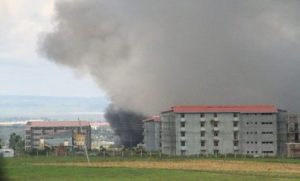by Tilahun Afessa
Few months ago, a close-friend of mine forwarded to me a copy of a paper written by Assafa Endeshaw, the title of which is “Nationalism in Ethiopia Revisited.” Assafa wrote the paper for a presentation at the 19th International Conference of Ethiopian Studies held at Warsaw University in August, 2015. Knowing Assafa by name since my H.S.I.U student days in the early 70s when he was a prominent student activist and the “national question” was the hottest issue of the time as it has been ever since, I read the paper with added curiosity. Few days later, Assafa made the paper available to the general public by posting it on some Ethiopian websites. (https://www.nazret.com/2017/01/12/nationalism-in-ethiopia-revisited/) 

“Revisiting” such controversial topic by a scholar for presentation in an international forum, I believe, signifies an intention to make a fresh appraisal of the issue. This is especially true when the conference calls for presentations on an ambitious subject matter, “Ethiopia – Diversity and Interconnections through Space and Time.” Reading the short introduction in which Assafa tells his readers that the paper “aims to re-examine the theoretical and political basis of current notions of the ‘national question’ in Ethiopia” reinforced my expectation that I would get a noble appraisal of the topic from his paper. Unfortunately, I have found the paper to be far short of my expectation. In fact, in my opinion, the paper exhibits at best intellectual laziness and at worst intellectual dishonesty. Hence, the urge on my part to say something about it, and this article is the result of that yearning. My aim is, by critically reviewing Assafa’s paper, to provoke more thoughtful discussion on this cardinal issue that has been shadowing the Ethiopian political climate for more than five decades now. To make my points as clear as possible, I will go over Assafa’s paper section by section with more detail on his, in my opinion, unfounded criticism of writings of two prominent Ethiopian scholars.
Assafa divided his paper in seven sections – the introduction, which I mentioned above, being the first one. In the next three sections, Assafa made an effort to define “the conceptual frame work for the national question.” In section two, he attempted to specify the theoretical underpinning to the general concept of “Ethnic Groups and Nations” as articulated by various well-known western intellectuals. I thought this section serves as a good jump-start and makes its readers anticipate pertinent analysis of the topic yet to come.
In section three, Assafa provides a sketch of the historical and conceptual background to that grandiose idea – “The Right to Self- Determination.” Starting with Kant’s principle of self-determination for the individual, touching on the principle of the French revolution that sovereignty resides in the nation and acknowledging the emergence of nationalist movements in response to the Napoleonic war of expansion, Assafa swiftly landed at the turn of the 20th century where “the Russian revolutionaries as well as US President Wilsontransformed self-determination into a formal right.” It is here Assafa talked about the pertinent articles in the Atlantic Charter of 1941 and the UN Charter which incorporated the principle of self-determination. So far so good!
I believe this section gives a good outline of the historical and conceptual background of the topic Assafa set out to discuss in his paper. I am in fact surprised that he managed to do this without mentioning even once in his entire paper the name of that well-known scarecrow—Stalin. These days, it is unimaginable in Ethiopian nationalist circles to put together a paragraph or two about the “national-question” without inserting at least one damning sentence about Stalin and his role in “infecting” the minds of the “ethno-nationalists” in Ethiopia. Assafa went even further in this section to let us know more about the impact of President Wilson’s “espousal of the principle” of self-determination than Lenin’sadvocacy for it. Let me digress a bit here to explain why I happen to share this understanding with Assafa as I believe that this well documented historical fact is less acknowledged in our discourse relating to this principle.
It is actually true that President Wilson was the one who declared that “every people has a right to choose the sovereignty under which they shall live” (speech in May, 1916) and “self-determination is not a mere phrase. It is an imperative principle of action” (address to U.S. Congress in 1918). Soon after the collapse of the USSR, the late U.S. Senator Daniel Patrick Moynihan– a celebrated scholar on his own-right who wrote numerous books on ethnicity and nationalism – stated the following about President Wilson and the principle of self-determination:
Wilson did not create nationalism, nothing of the sort. But did respond to it with the doctrine of self-determination. At the level of statecraft, that is his. Absent him, the “principle” of self-determination would not be ratified by the United Nations Charter; it was he who put it on the agenda of international order. It is a monument in more than one sense. (Pnadaemonium, Ethnicity in International Politics, Oxford University Press, 1993, p.81)
It is to be noted here that the Senator was not an admirer of President Wilson nor a supporter of the principle of self-determination as espoused by the President. To this effect, Senator Moynihan told a story that even the President’s own Secretary of State at the time, Robert Lansing, thought the phrase “self-determination” was “simply loaded with dynamite” and “presciently foretold the trouble to come.” He quoted the following from Lansing’s note written in December 1918:
When the President talks of “self-determination” what unit has he in mind? Does he mean a race, a territorial area or a community? Without a definite unit, which is practical, application of this principle is dangerous to peace and stability. (Ibid, p82).
Isn’t this exactly what we are saying now, almost a century later, about Article 39 of the Ethiopian Constitution which contains the provision that “Every nation, nationality or people in Ethiopia shall have the unrestricted right to self-determination up to secession”? (Emphasis mine) Strange world!
Senator Moynihan also recited the following remark from an Aug. 14, 1991 NewYork Times article, written by Karl E. Meyer, a U.S. based journalist, entitled “Woodrow Wilson’s Dynamite: The Unabated Power of Self-Determination”:
From the Baltics to the Adriatic, from the Ukraine to the Balkans, oppressed millions have given new life to his imperative – and often troublesome-principle. Indeed, if results are the measure, Wilson has proved a more successful revolutionary than Lenin.” (Ibid; emphasis mine).
When it comes to the principle of self-determination, to those of us who grew up under the sway of Lenin and Stalin in the 70s, the assertion that President Wilson of U.S.A was “a more successful revolutionary” than Comrade Leninof U.S.S.R may sound an outlandish remark. However, people like Moynihan who spent considerable amount of time studying the subject in the international arena found it to be a verifiable statement of fact. As such, as I make my exit out of this section, I commend Assafa for challenging us to get out of the box whenever we try to deliberate on any salient political principle such as this one. In the Ethiopian context, this challenge applies equally to both supporters as well as opponents of the principle of self-determination as enshrined in Article 39 of the Ethiopian constitution.
In section four, Assafa attempts to show us a glimpse of what he called “the current context for Ethnicity and Nationalism (in Africa).” Here, he rushed fast over what he considers to be the main causes for the resurgence of sectarian movements in various multi-ethnic third-world countries of the world, including Africa. According to Assafa, after the cold-war was over, whatever devices these countries are left with in their arsenal to deal with their ethnic problems haven’t worked at all for them. Unless such “conflicts are brought to end as soon as possible,” Assafaconcludes, the survival of the people living in these countries is at stake and Ethiopia is “not an exception” to this phenomena. Assafa closed this section with the following attention grabbing remark:
While the solution to the problems in the entire Horn may be generally similar, Ethiopia’s exceptional history, cultural and state formation need to be scrutinized separately to evolve a framework appropriate to its needs.
There is nothing new Assafa told us in this section other than enticing us to march with him to the next section – a section that deals with “The Formation and Evolution of the Ethiopian State”– with much anticipation.








